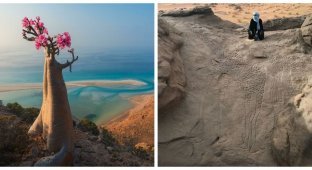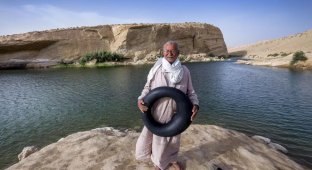The Aral Sea is rising from the dead: why are people talking more often about the return of the waters? (11 photos)
There is a desert called Aralkum in Central Asia. This place is poor and gloomy, 38 thousand square kilometers of parched, salty soil. Only a few picky plants and equally drought-resistant animals live here. Small bodies of water are the only place where you can quench your thirst. 
Camels are ships of the desert.
But right in the middle of the desert there are... ships? Now a mixture of sand and salt is beating against their side. But just 50 years ago, the waves of the fourth largest lake on the planet crashed. Aral Sea. 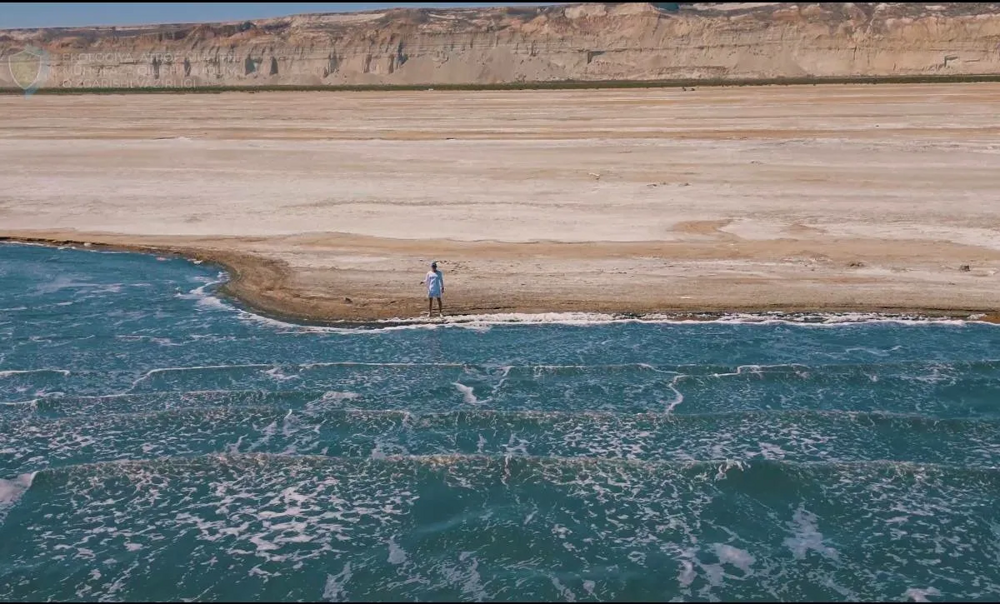
Do you see the mountains in the background? This is the former shore.
The bottom was littered with the shells of dozens of species of mollusks. In the water column lived a complex plankton community that could support more than 30 species of fish. On the Kazakh side of the lake alone there was one canning plant, five fish factories and 45 fish collection points. Every day, dozens of ships went fishing. And the annual catch reached 60 thousand tons! Stories about green shores and rich waters spread throughout the USSR. 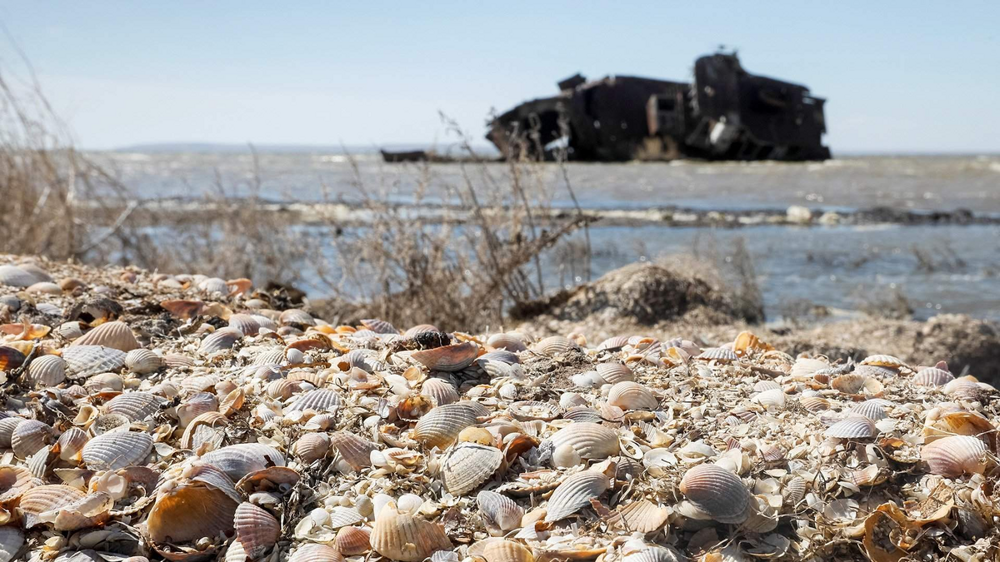
The shells of the former inhabitants still litter the sands of Aralkum. 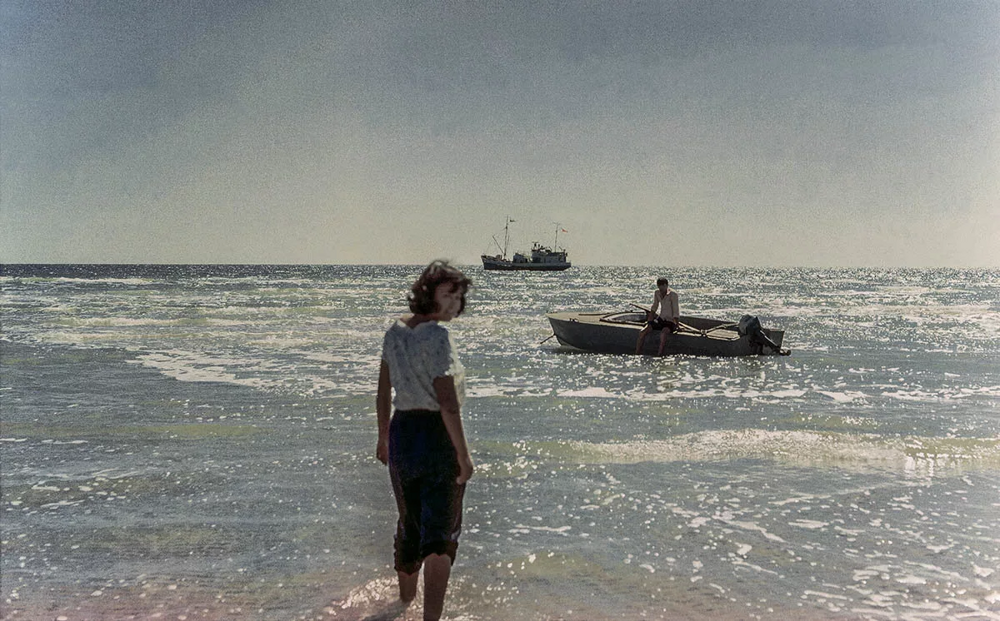
The Aral Sea is large and deep. In the background is a fishing boat.
But even then, environmentalists sounded the alarm: every year the seashore retreated a couple of meters. And every summer it gets faster. The fact is that upstream the Amur Darya and Syr Darya - the two main rivers of Central Asia - cotton plantations were organized. This plant is capricious and requires a huge amount of water to grow. 
Shallowing of the Aral Sea by year.
Plantations built in dry soil immediately absorbed water. The Aral Sea received only muddy streams from the main water arteries. The situation looked dangerous, but no one could have thought then that the sea would lose 97% of its volume. Groundwater will go away, and green lands will turn into wastelands. 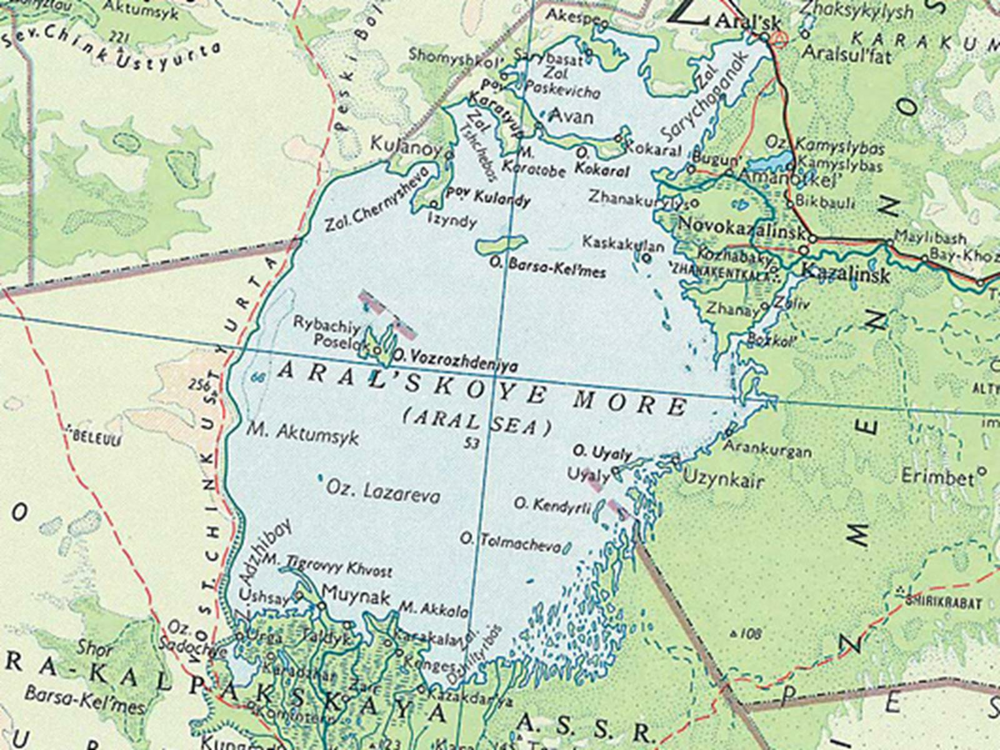
Unfortunately, satellite photographs of the Earth appeared relatively recently, and we did not have time to photograph the Aral Sea in its prime. You'll have to be content with a map from the 50s.
The last time the Aral Sea was truly stable was in the 30s of the last century, before the first cotton plantations appeared. During these years, the sea area was maximum: 68,000 square kilometers. It was the fourth largest lake on the planet. Just imagine: a lake 426 kilometers long and 280 kilometers wide! Now only pieces of the sea remain. 4 reservoirs: Big Aral, Small Sea, Tshche-Bas Bay and Central Aral. 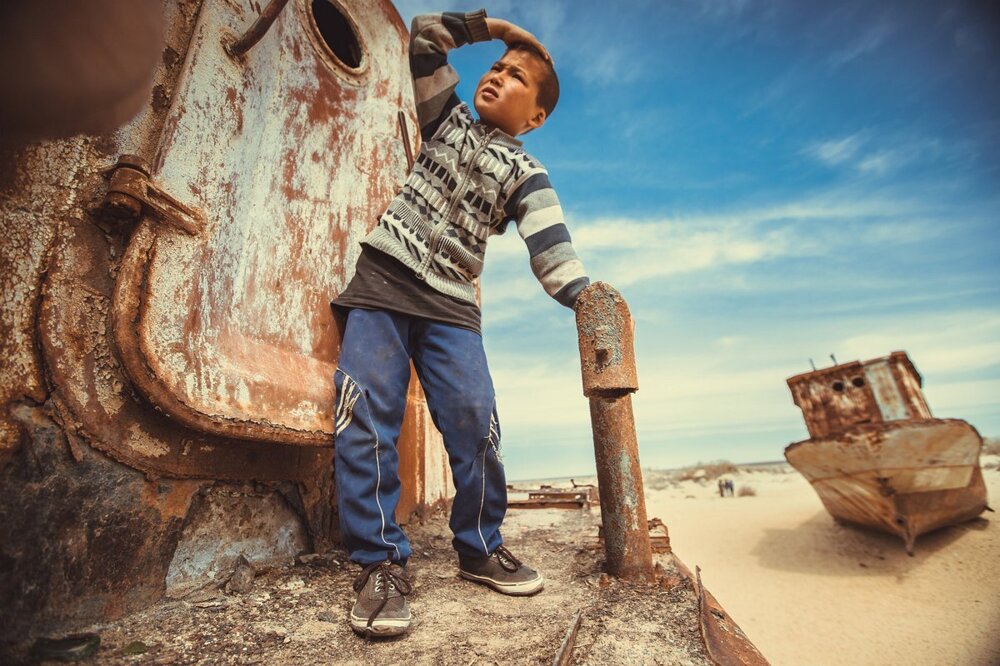
Is the sun on my head or is there really water there?
Unfortunately, it will not be possible to return the Aral Sea to its former greatness. It is almost impossible to even restore it to the level of the 70s and 80s. Humanity needs too much water for its plantations, factories and cities. However, it seems that it was possible to stop the final disappearance of the reservoir. 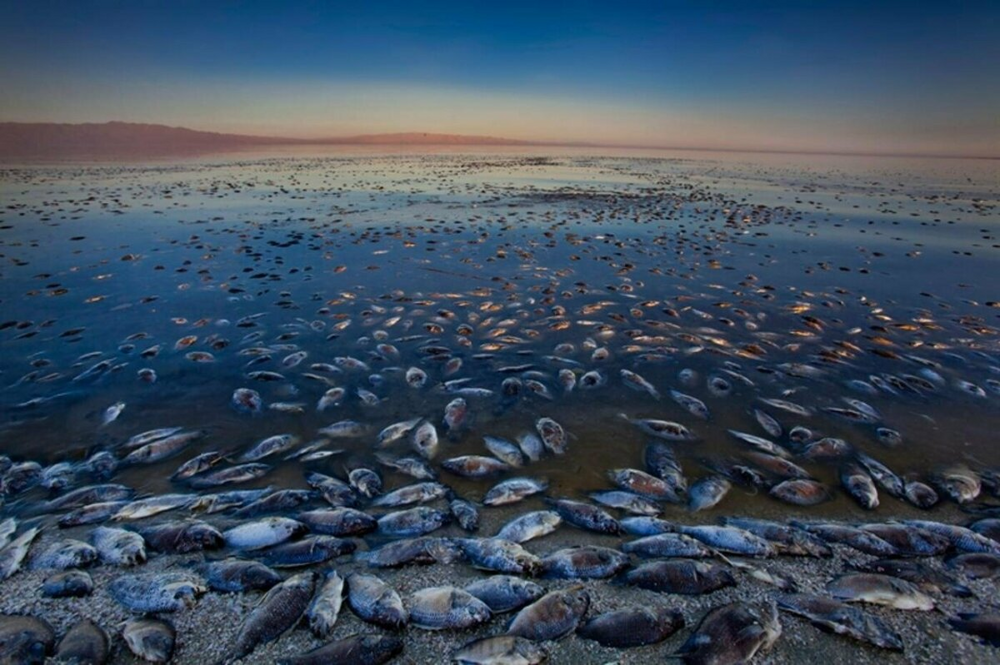
Now the remaining lakes contain fish that have adapted to extremely salty water. But even they do not always manage to survive the drought.
In 2005, the government of Kazakhstan built the Kokaral Dam - 13 kilometers of concrete, earth and complex hydraulic structures. It made it possible to control the flow of water and thereby stabilize the northern part of the Aral Sea. And the result is obvious! 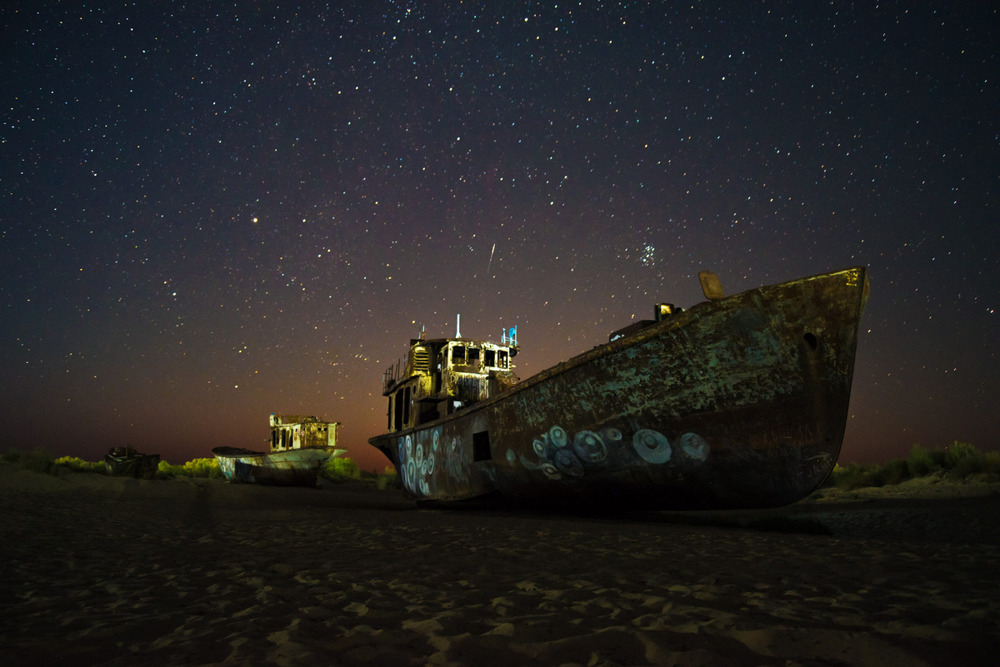
There are many fishing boats left in the Aral Sea. 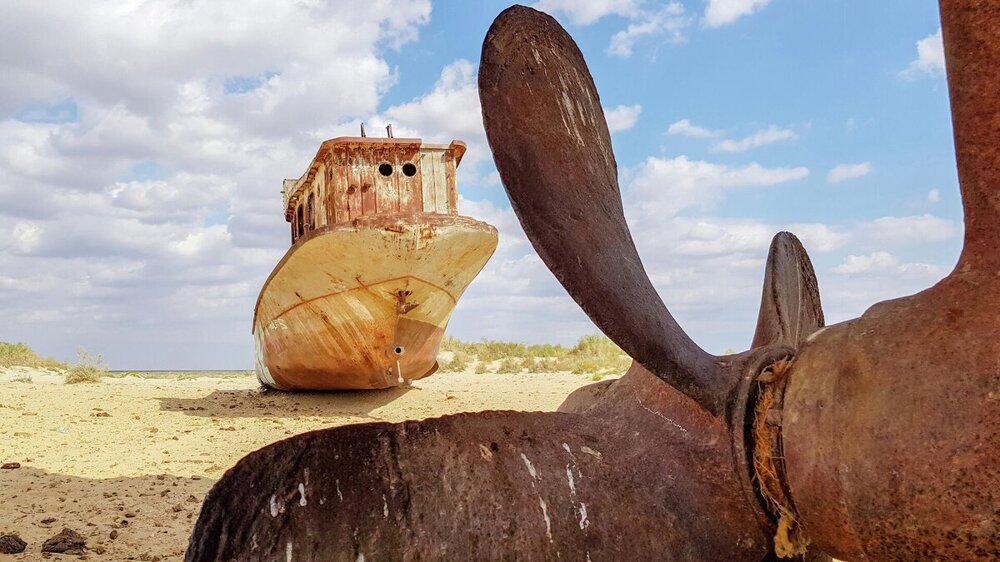
It is called the ship graveyard.
The salinity in the lake has decreased, the fauna has become richer, and in 2023, 1.5 billion cubic meters of water entered the Northern Aral. So much so that the lake has increased in size! 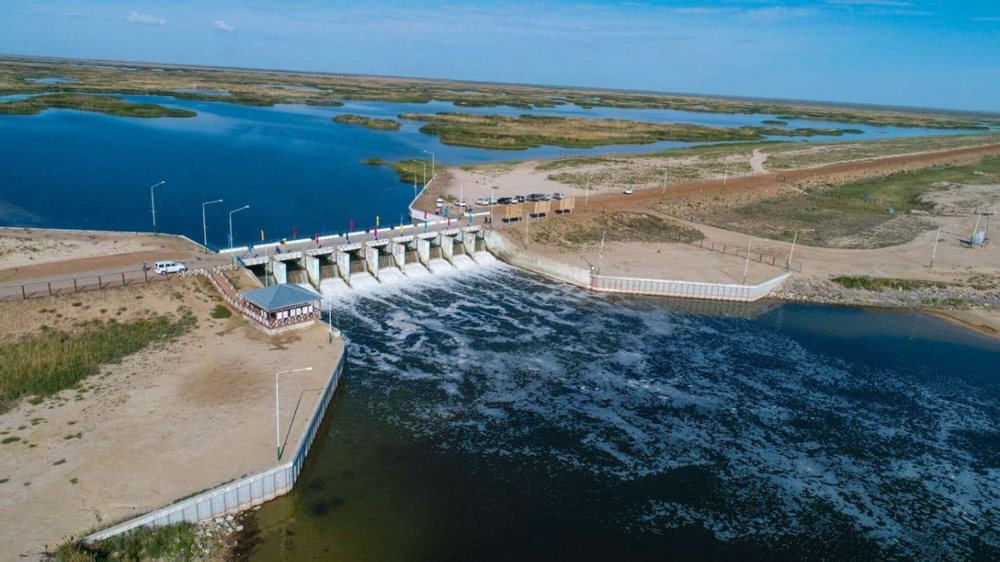
Kokaral Dam.
But the restoration work has only just begun. The next goal: to dig channels from the large lake Karashalan. It is located 7 kilometers from the Aral Sea. Its waters will help triple the fish population of the former sea!













